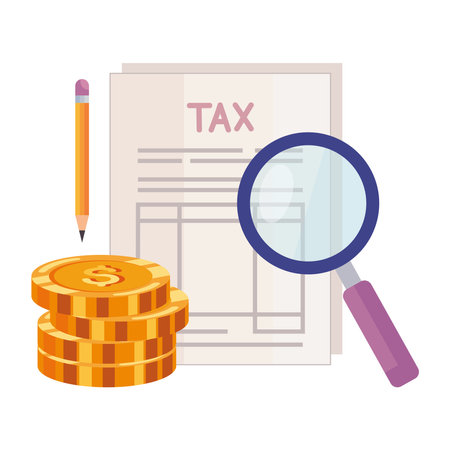1. Introduction: The Power of Charitable Giving
Charitable giving is more than just an act of kindness—it’s a way to make a meaningful difference in your community while also benefiting your financial situation. When you donate to qualified charitable organizations, you not only help support causes you care about but may also reduce your taxable income and lower your overall tax bill.
How Charitable Donations Benefit the Community
Your contributions to nonprofit organizations can provide essential funding for programs that address social issues, support education, fund medical research, and assist those in need. Whether youre donating to a local food bank, a national charity, or an international relief organization, your generosity has a real impact.
How Charitable Donations Can Benefit You Financially
In addition to making a difference in the world, charitable donations can also provide tax benefits. Depending on the type of donation and how you give, you may be able to deduct contributions from your taxable income, potentially reducing the amount you owe in taxes. Understanding these benefits can help you maximize both your giving and your tax savings.
Common Tax Benefits of Charitable Giving
| Type of Donation | Potential Tax Benefit |
|---|---|
| Cash Donations | Deductible up to 60% of Adjusted Gross Income (AGI) for qualified charities |
| Donations of Appreciated Assets (Stocks, Real Estate) | Avoid capital gains tax and receive a deduction based on fair market value |
| Qualified Charitable Distributions (QCDs) from IRAs | Reduce taxable income for retirees age 70½ and older |
| Donor-Advised Funds (DAFs) | Immediate tax deduction with flexibility on when charities receive funds |
(1) Increasing Your Tax Savings with Strategic Giving
By planning your charitable donations strategically, such as bundling multiple years’ worth of donations into one tax year or leveraging employer matching programs, you can enhance both your philanthropic impact and tax benefits.
(2) Ensuring Your Donations Qualify for Tax Deductions
To claim a deduction, donations must be made to IRS-recognized 501(c)(3) organizations. Keeping proper records, including receipts and acknowledgment letters from charities, is crucial for ensuring compliance with tax laws.
Understanding how charitable giving affects both your community and your finances allows you to give more effectively while taking advantage of valuable tax benefits. In the next section, well explore the specific types of charitable contributions that qualify for deductions and how they work under U.S. tax law.
2. Understanding Tax Deductions for Charitable Donations
Donating to charity not only helps support causes you care about, but it can also provide valuable tax benefits. However, to maximize these benefits, its essential to understand how tax deductions for charitable contributions work. Below, we’ll break down the key aspects, including qualified organizations and deduction limits.
What Counts as a Qualified Organization?
The IRS sets specific guidelines on which organizations qualify for tax-deductible donations. Generally, your donation must go to a recognized nonprofit organization that falls under the 501(c)(3) category. Some common types of eligible organizations include:
- Religious institutions (churches, synagogues, mosques, etc.)
- Educational institutions and schools
- Nonprofit hospitals and medical research organizations
- Cultural organizations like museums and public libraries
- Charitable foundations that provide aid to those in need
You can verify whether an organization qualifies by using the IRS’s Tax Exempt Organization Search tool.
Understanding Deduction Limits
The IRS imposes limits on how much you can deduct based on your adjusted gross income (AGI). The percentage varies depending on the type of donation and recipient organization. Here’s a quick breakdown:
| Type of Contribution | Deduction Limit (% of AGI) |
|---|---|
| Cash Donations to Public Charities | Up to 60% |
| Non-Cash Donations (Property, Stocks, etc.) | Up to 30% |
| Donations to Private Foundations | Up to 30% (cash) / 20% (non-cash) |
If your donations exceed these limits in a single year, you may be able to carry over the excess amount for up to five years.
The Standard Deduction vs. Itemizing Your Contributions
Your ability to deduct charitable donations depends on whether you take the standard deduction or itemize your deductions.
(1) Standard Deduction
If you take the standard deduction, you won’t be able to deduct individual charitable contributions. For 2024, the standard deduction amounts are:
- $14,600 for single filers
- $29,200 for married couples filing jointly
- $21,900 for heads of household
(2) Itemizing Deductions
If your total deductions—including charitable contributions—exceed the standard deduction amount, itemizing may allow you to claim a greater tax benefit.

3. Types of Charitable Contributions and Their Tax Benefits
When it comes to charitable giving, there are several ways to donate, each offering unique tax advantages. Understanding the different types of contributions can help you maximize your tax benefits while supporting causes you care about.
Cash Donations
Cash donations are the simplest and most common type of charitable contribution. Whether you donate via check, credit card, or direct bank transfer, these contributions are generally tax-deductible up to a certain percentage of your adjusted gross income (AGI).
Tax Benefits:
- You can deduct up to 60% of your AGI for cash contributions to qualified charities.
- Easier to track with receipts and bank statements.
- No need to appraise value—just use donation receipts for documentation.
Donating Securities (Stocks, Bonds, Mutual Funds)
Donating appreciated securities is a tax-efficient way to give because it allows you to avoid capital gains taxes while still claiming a deduction for the full fair market value.
Tax Benefits:
- You can deduct the full fair market value if youve held the securities for more than one year.
- Avoid paying capital gains tax on appreciated assets.
- Deductions typically limited to 30% of AGI, but excess amounts can be carried forward for up to five years.
Real Estate Donations
If you own property that has significantly appreciated in value, donating real estate can provide substantial tax savings while benefiting a charitable organization.
Tax Benefits:
- Avoid capital gains tax on appreciated property values.
- You may qualify for a deduction based on the propertys fair market value.
- Deductions are usually capped at 30% of AGI with a five-year carryforward option.
Tangible Personal Property Donations
This includes items such as artwork, vehicles, jewelry, or collectibles donated to charities that can either use them directly or sell them to fund their programs.
Tax Benefits:
- If the charity uses the item in its mission, you may deduct its fair market value.
- If sold by the charity instead of used directly, deductions may be limited to your cost basis.
- Deductions are generally capped at 30% of AGI.
The Tax Benefits Comparison Table
| Type of Donation | Main Tax Benefit | Deductions Limit (% of AGI) |
|---|---|---|
| Cash | Deductions up to full donation amount | 60% |
| Securities | Avoid capital gains tax + deduct full fair market value | 30% |
| Real Estate | Avoid capital gains tax + deduct fair market value | 30% |
| Tangible Property | Deductions depend on how the charity uses the item | 30% |
Selecting the right type of charitable contribution can help you optimize your tax strategy while making a meaningful impact. Always keep records and consult with a tax professional to ensure compliance with IRS regulations.
4. Strategies to Maximize Tax Savings While Giving
Charitable giving can be a powerful way to support the causes you care about while also reducing your tax liability. By using smart giving strategies, you can maximize your tax savings and make a greater impact. Below are some key approaches to optimize your charitable contributions.
Bundling Donations for Higher Deductions
If your total itemized deductions are close to the standard deduction amount, bundling multiple years’ worth of donations into a single year may help you surpass the threshold and benefit from itemizing deductions.
(1) How Bundling Works
- Instead of donating annually, consider making a larger donation every two or three years.
- This approach allows you to exceed the standard deduction in the year you donate and maximize your tax benefits.
- You can still support your preferred charities consistently by planning ahead.
Using Donor-Advised Funds (DAFs)
A donor-advised fund (DAF) is a charitable account that lets you contribute, receive an immediate tax deduction, and recommend grants over time.
(1) Benefits of a DAF
- You get an immediate tax deduction when you contribute to the fund.
- Your contributions can be invested and potentially grow tax-free.
- You have flexibility in distributing funds to charities over time.
Donating Appreciated Assets Instead of Cash
Giving stocks, mutual funds, or other appreciated assets instead of cash can provide additional tax advantages.
(1) Why Donate Appreciated Assets?
- You avoid paying capital gains tax on the asset’s appreciation.
- You still receive a charitable deduction based on the asset’s fair market value.
- This strategy is especially beneficial for those holding highly appreciated investments.
Comparison of Giving Strategies
| Strategy | Main Benefit | Ideal For |
|---|---|---|
| Bundling Donations | Larger deductions by surpassing standard deduction threshold | Donors with fluctuating income or near standard deduction limit |
| Donor-Advised Funds | Immediate tax benefit while giving over time | Long-term donors who want flexibility and potential tax-free growth |
| Appreciated Asset Donations | Avoids capital gains tax while maximizing deductions | Investors with highly appreciated stocks or assets |
5. Common Mistakes to Avoid When Claiming Charitable Deductions
Donating to charity is a great way to support causes you care about while also lowering your tax bill. However, mistakes in claiming charitable deductions can lead to missed tax benefits or even IRS scrutiny. Here are some of the most common errors taxpayers make and how to avoid them.
(1) Failing to Keep Proper Documentation
The IRS requires specific documentation for charitable donations. Without proper records, you may not be able to claim your deduction if audited.
Required Documentation Based on Donation Type
| Donation Type | Required Documentation |
|---|---|
| Cash Donations (under $250) | A bank record or receipt from the charity |
| Cash Donations ($250 or more) | A written acknowledgment from the charity |
| Non-Cash Donations (under $500) | A detailed description of donated items |
| Non-Cash Donations ($500-$5,000) | Form 8283 and a receipt from the charity |
| Non-Cash Donations (over $5,000) | A qualified appraisal and Form 8283 |
(2) Donating to Non-Qualified Organizations
Only donations to IRS-recognized 501(c)(3) organizations are tax-deductible. Before donating, verify the organization’s status using the IRS Tax-Exempt Organization Search.
(3) Overestimating the Value of Non-Cash Donations
If you donate items such as clothing, furniture, or electronics, they must be valued at their fair market price—not their original purchase price. Using an inflated value can raise red flags with the IRS.
(4) Not Filing the Right Forms for Large Donations
If your non-cash donation exceeds $500, you must file Form 8283 with your tax return. For donations over $5,000, a professional appraisal is required.
(5) Missing Deadlines for Year-End Contributions
Your donation must be made by December 31st of the tax year in which you want to claim it. Postmarking a check or initiating an online donation before midnight ensures eligibility.
6. Conclusion: Making the Most of Your Charitable Giving
Charitable giving not only supports causes you care about but also provides valuable tax benefits when approached strategically. By understanding the tax advantages, choosing the right donation methods, and keeping proper records, you can maximize both your financial savings and social impact.
Key Takeaways
- Tax Deductions: Donations to qualified charities can reduce your taxable income, potentially lowering your overall tax bill.
- Strategic Giving: Using methods like donor-advised funds (DAFs), appreciated assets, or bunching donations can enhance your tax benefits.
- Required Documentation: Keeping receipts and ensuring donations meet IRS requirements is crucial for claiming deductions.
- Long-Term Impact: Planning your charitable giving allows you to support causes more effectively while optimizing financial benefits.
Maximizing Financial and Social Impact
A well-planned approach to charitable giving ensures that both you and the organizations you support get the most out of your contributions. Consider these strategies:
(1) Choose Tax-Efficient Donation Methods
Certain types of donations offer greater tax advantages. The table below highlights some common methods and their potential benefits:
| Donation Type | Tax Benefit |
|---|---|
| Cash Donations | Deductions up to 60% of AGI for qualified charities |
| Appreciated Assets (Stocks, Real Estate) | Avoid capital gains tax + deduct fair market value |
| Donor-Advised Funds (DAFs) | Immediate tax deduction with flexibility on disbursement timing |
| Qualified Charitable Distributions (QCDs) | Satisfies RMDs without increasing taxable income (for those 70½+) |
(2) Plan Donations Around Your Tax Strategy
If you itemize deductions, consider bunching multiple years’ worth of donations into a single year to exceed the standard deduction threshold. This allows you to maximize your tax savings while continuing to support charities in future years.
(3) Verify Charity Eligibility
The IRS only allows deductions for contributions to recognized 501(c)(3) organizations. Before donating, confirm an organization’s status using the IRS Tax Exempt Organization Search tool.
(1) Keep Proper Records
The IRS requires documentation for all charitable contributions. For cash donations over $250, a written acknowledgment from the charity is necessary. Non-cash donations may require additional valuation proof.
(2) Consult a Tax Professional
Navigating tax laws can be complex. A financial advisor or CPA can help ensure youre making the most of available deductions while staying compliant with IRS rules.
A thoughtful approach to charitable giving not only helps those in need but also provides meaningful financial benefits. With careful planning, you can make a lasting difference while optimizing your tax situation.


